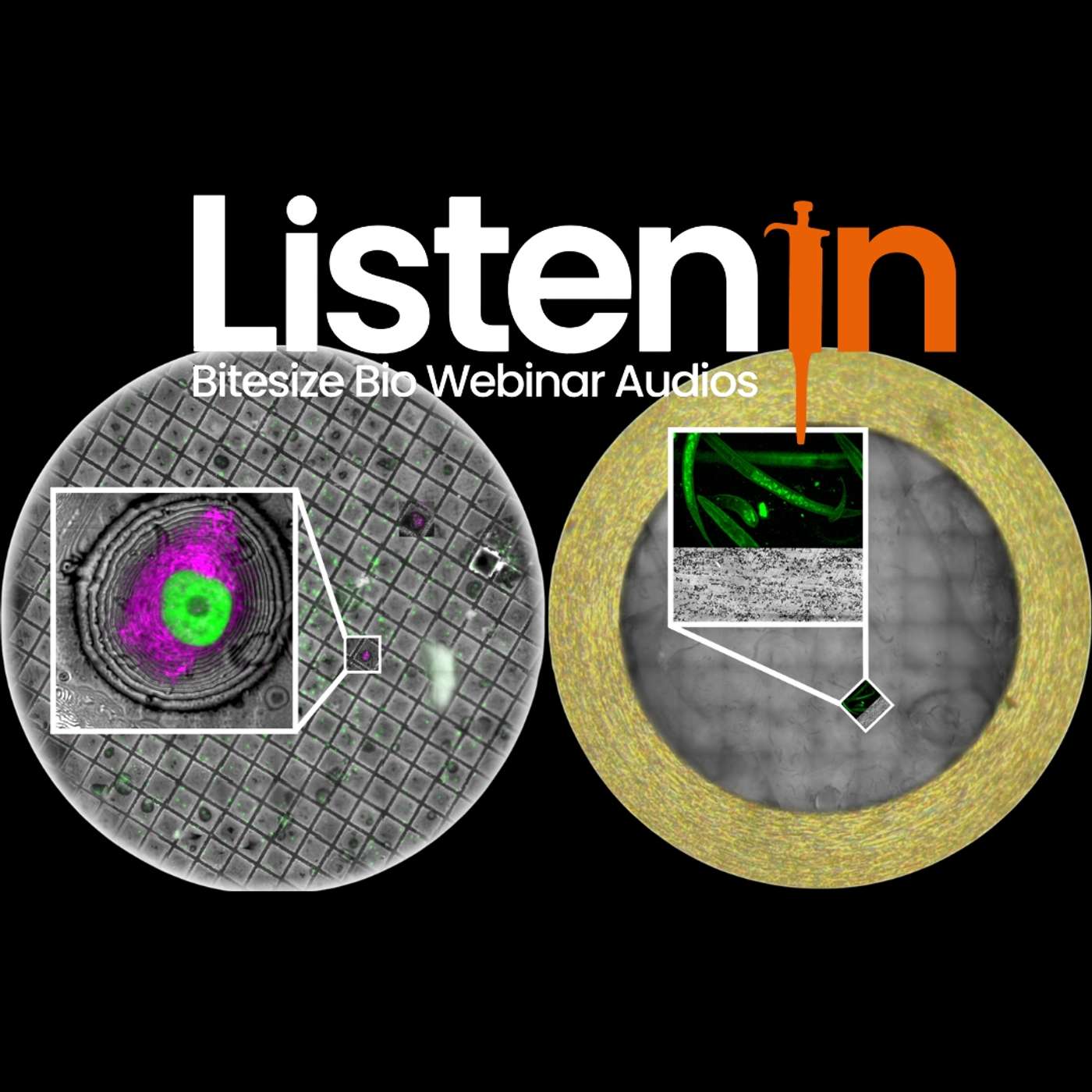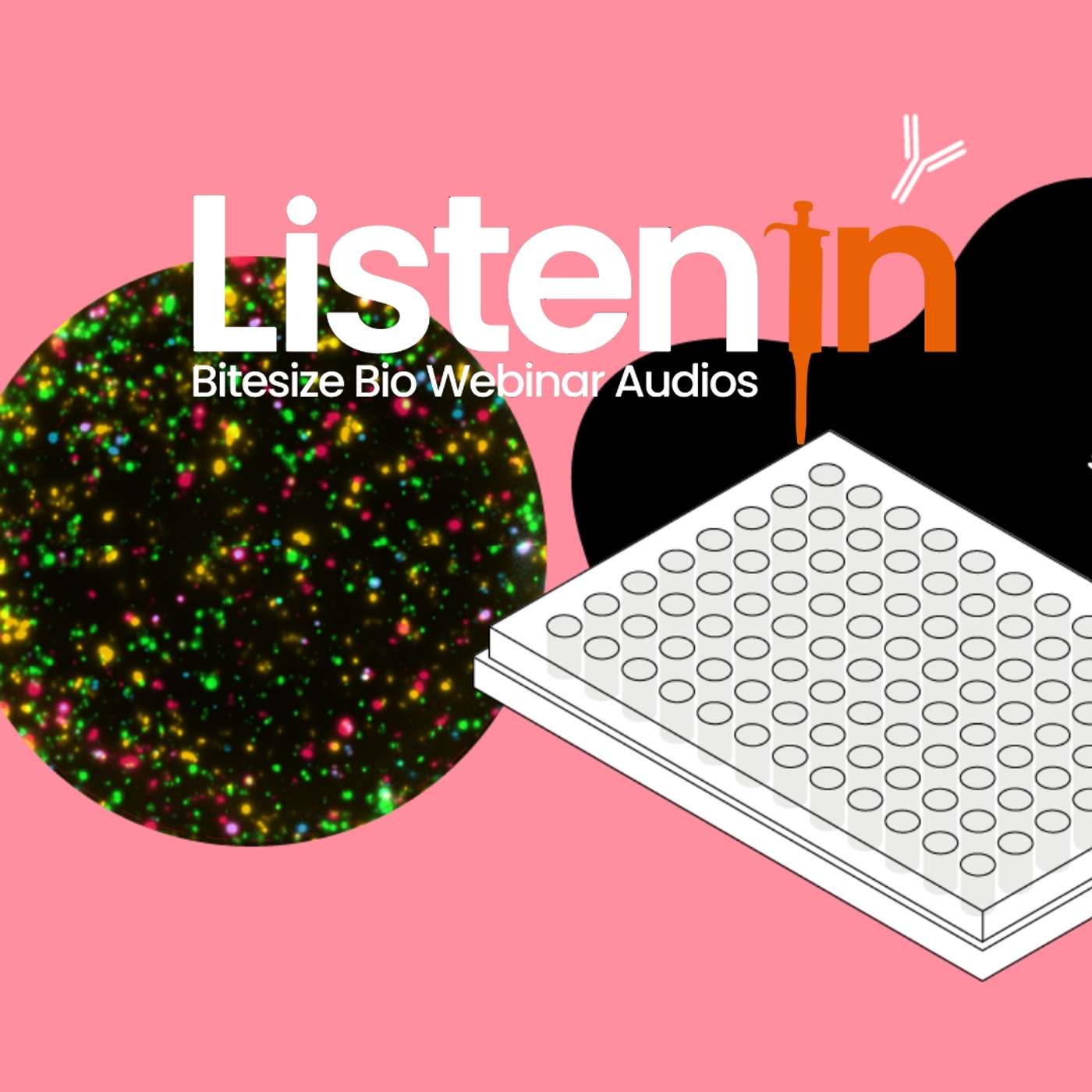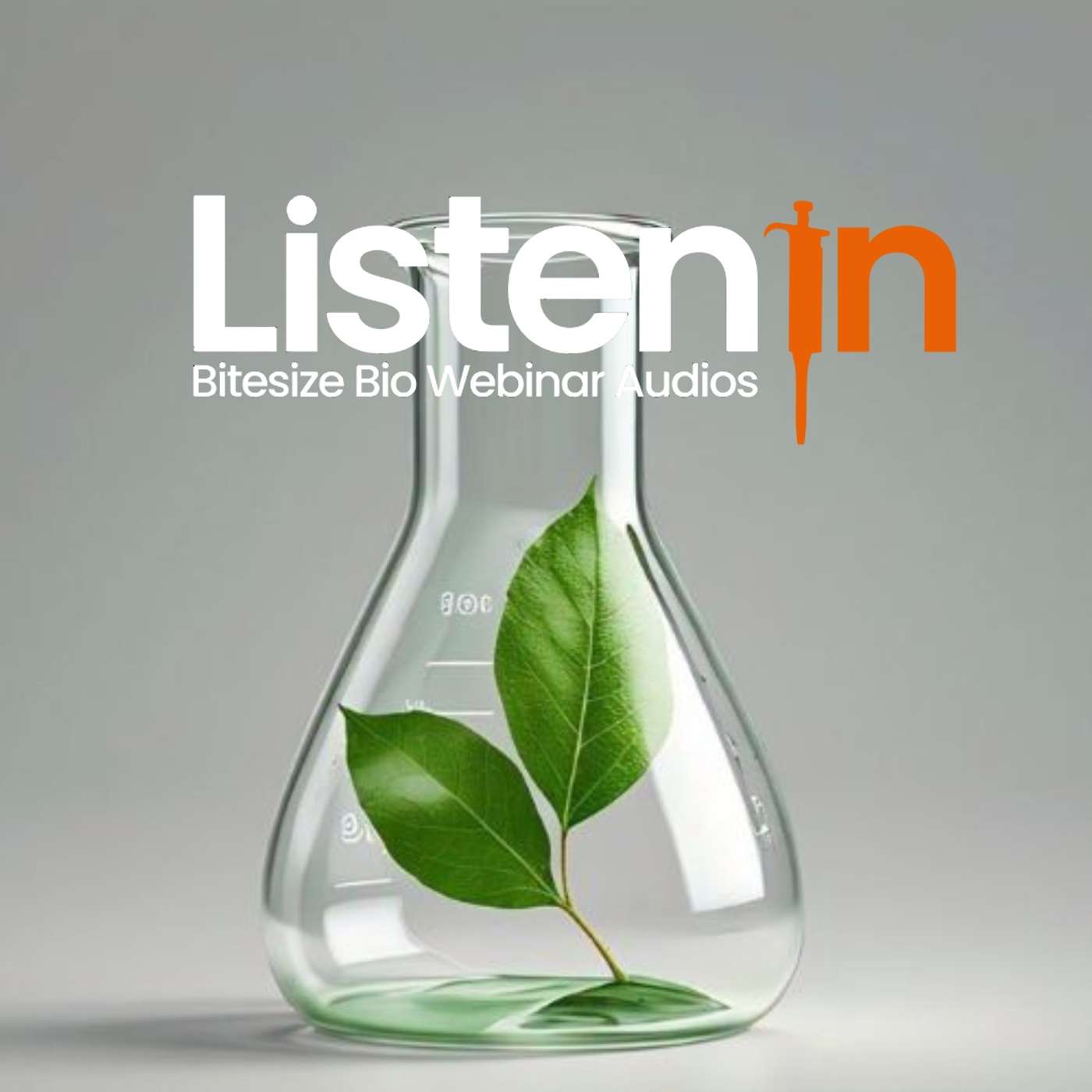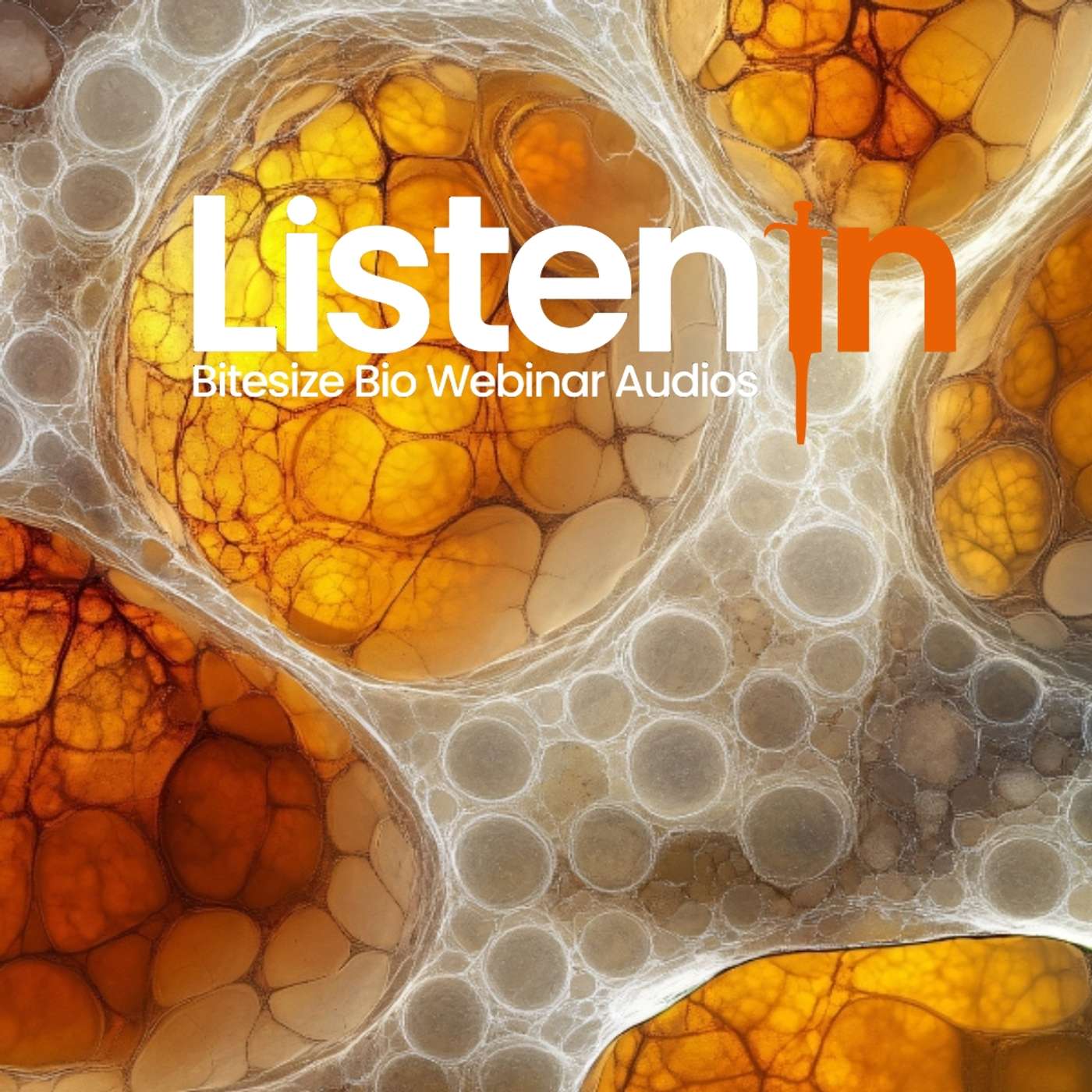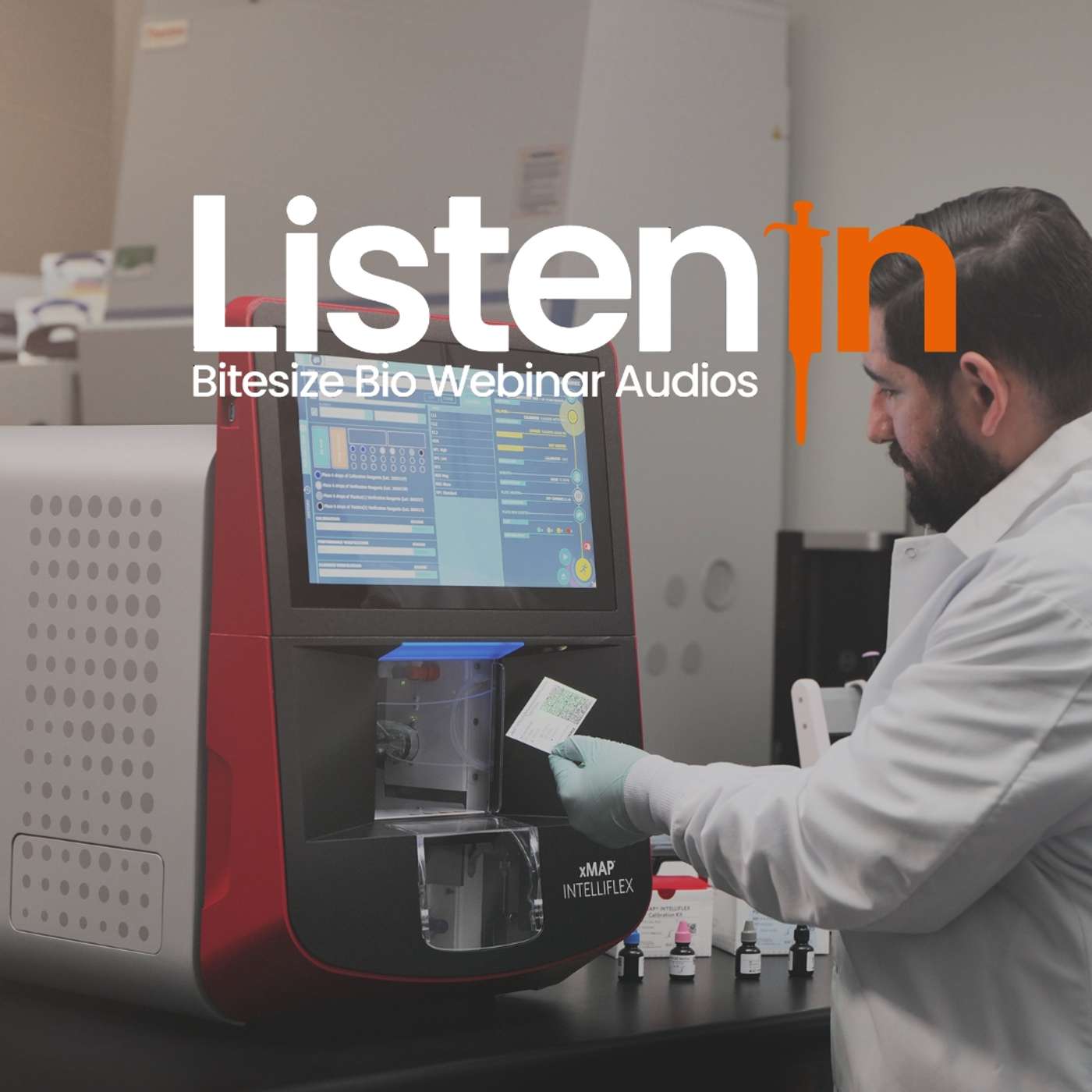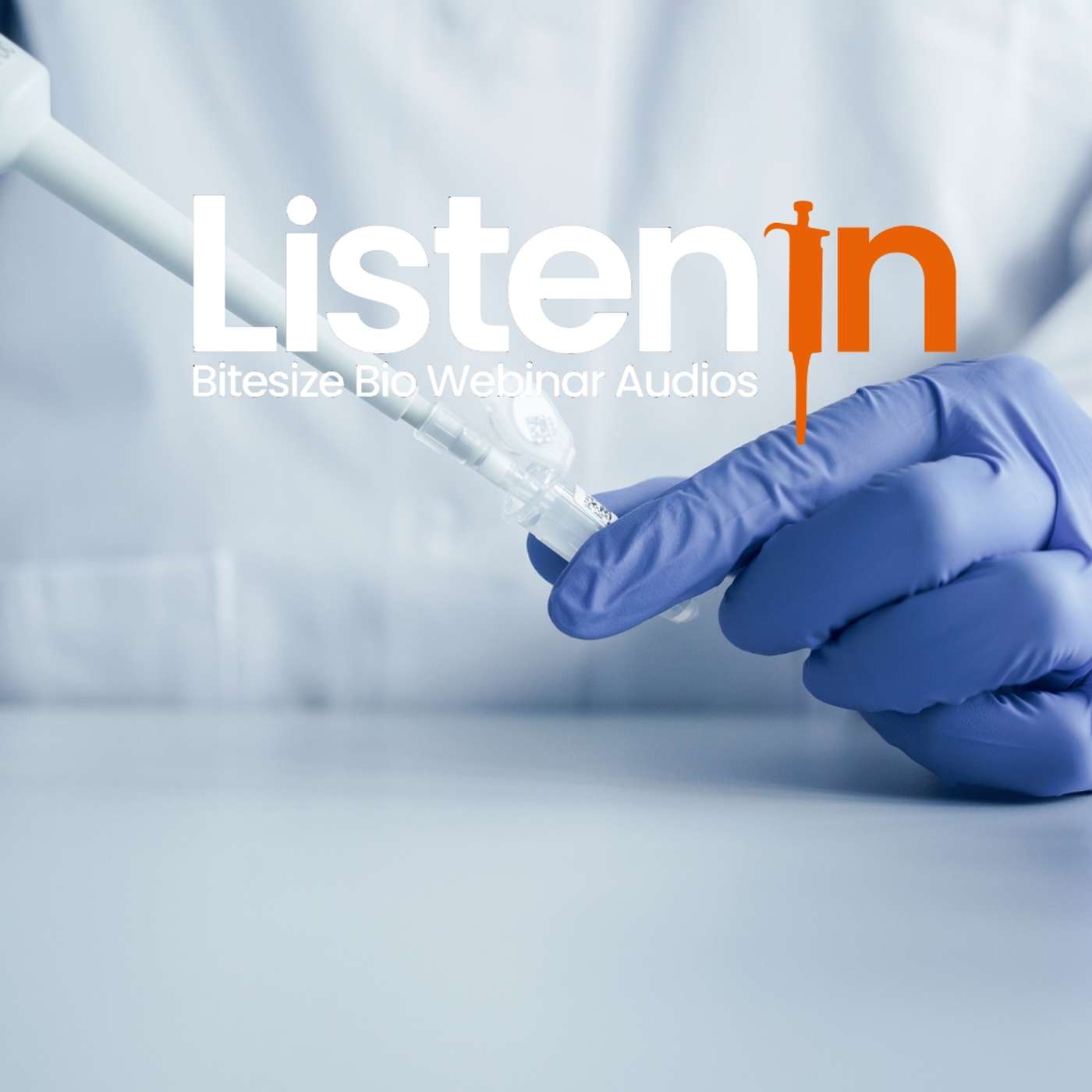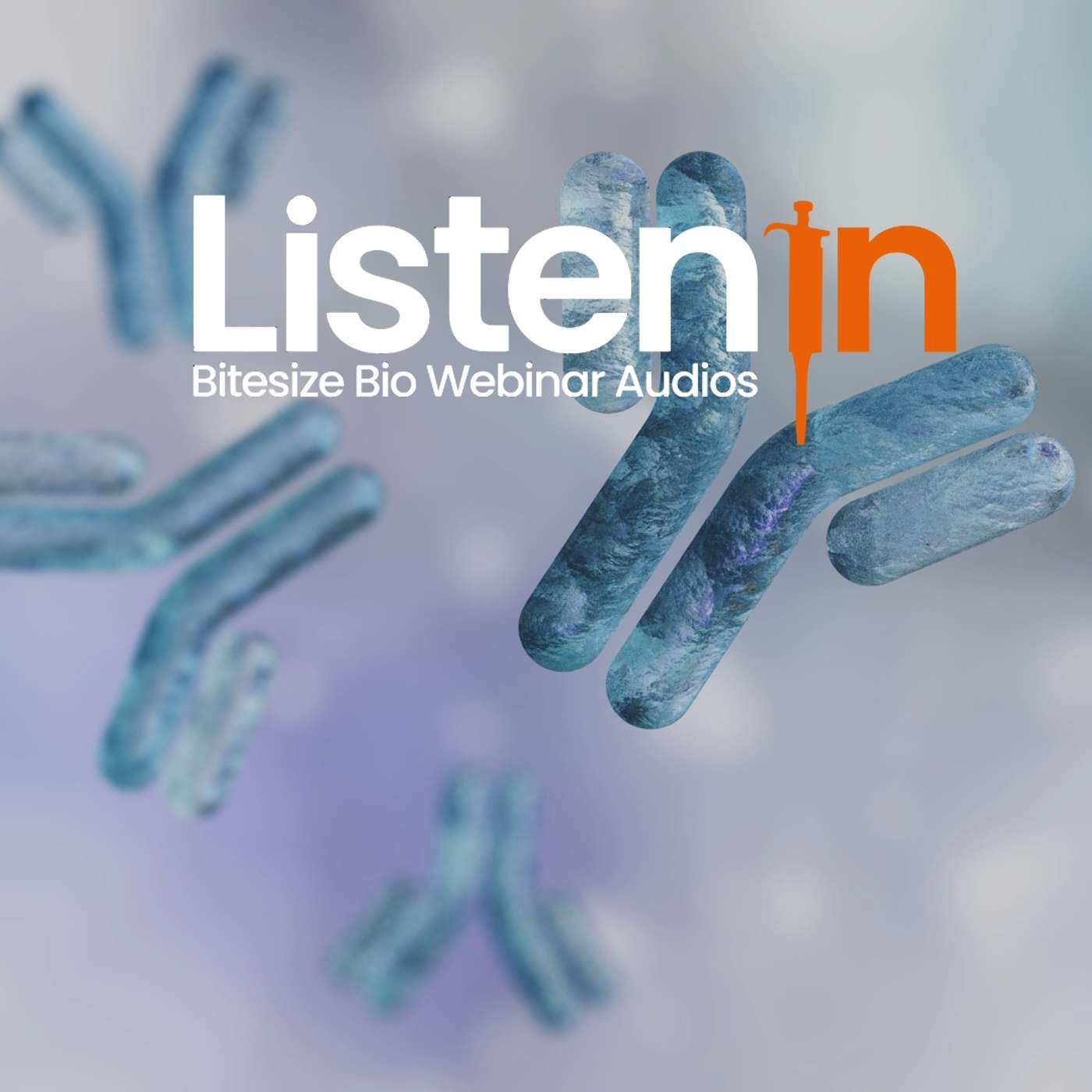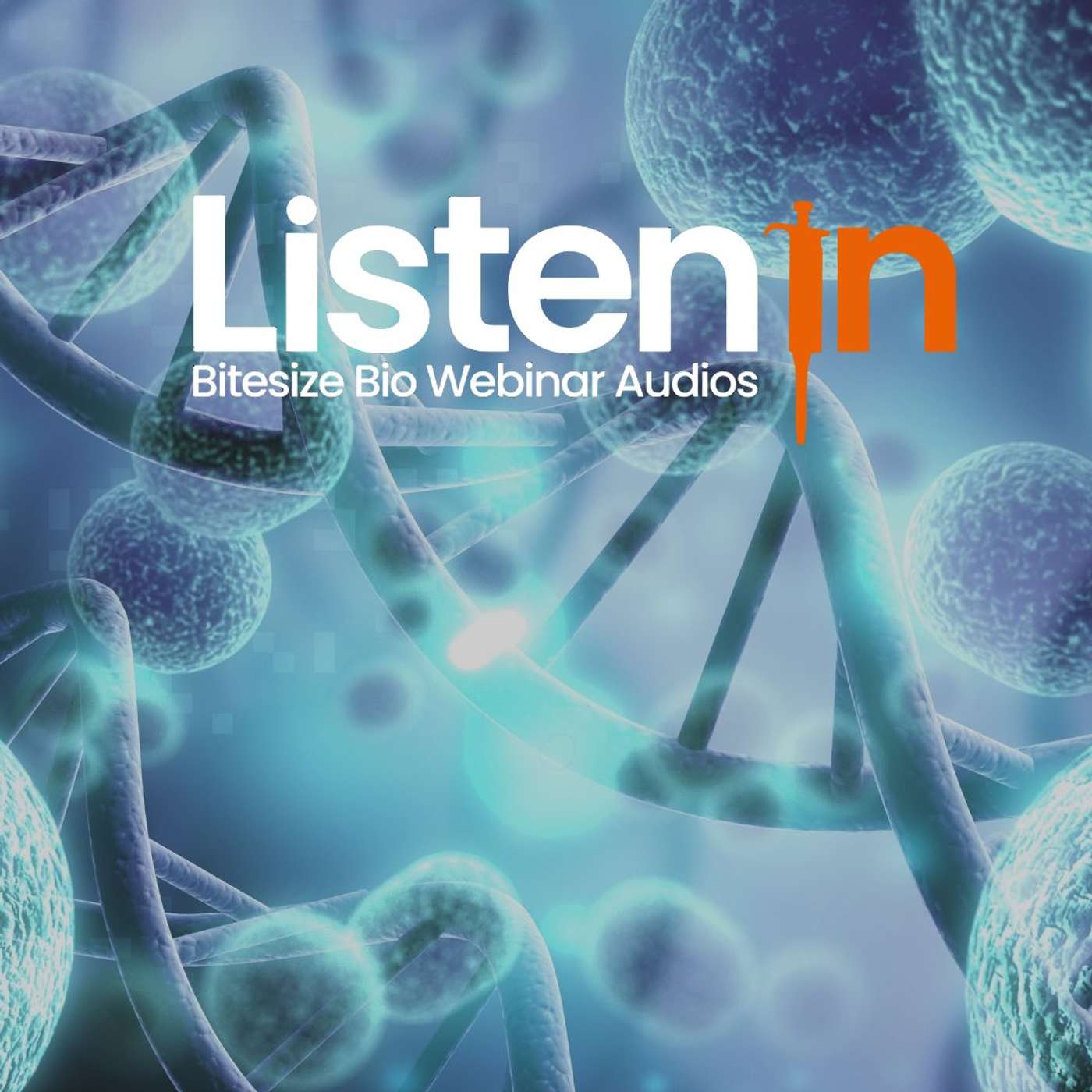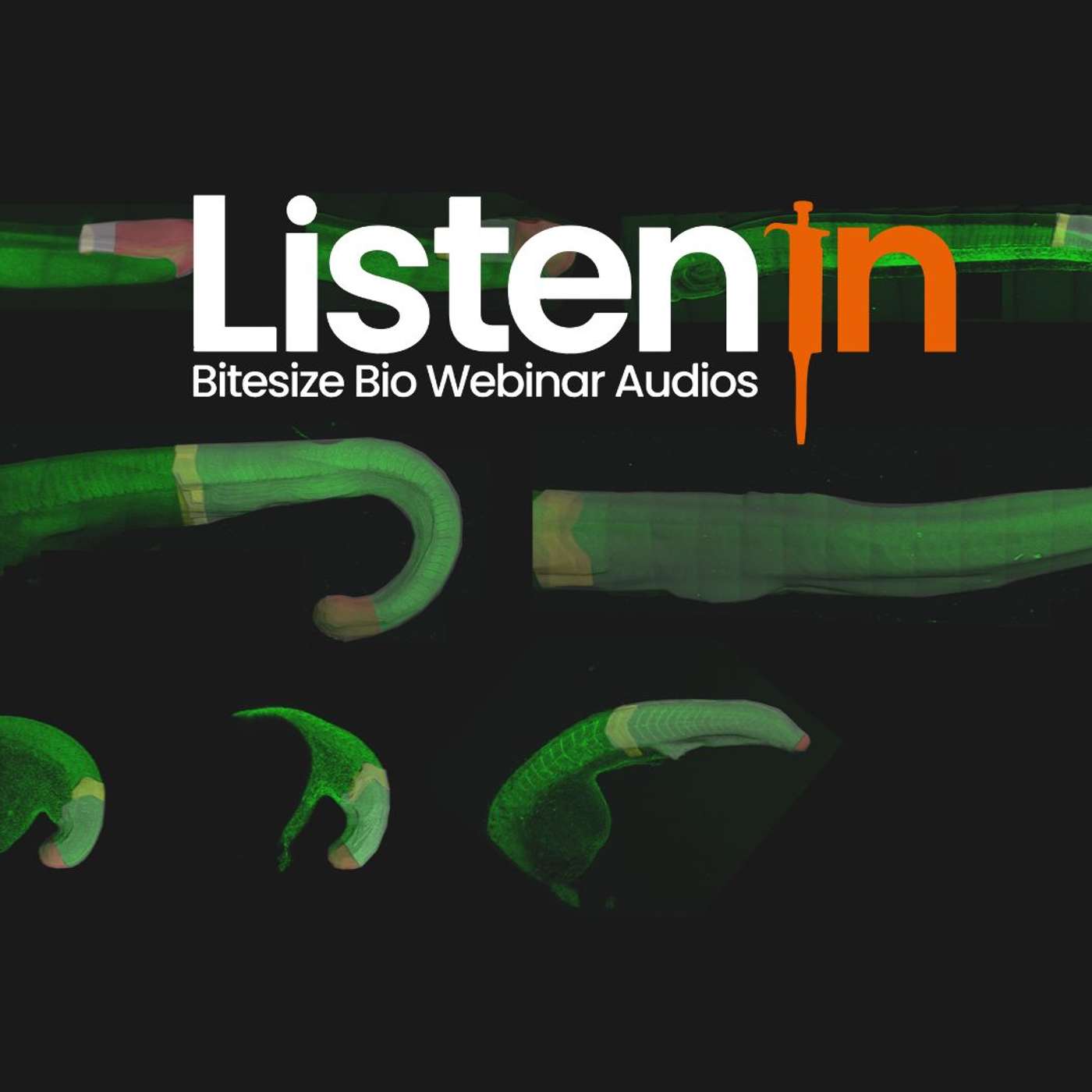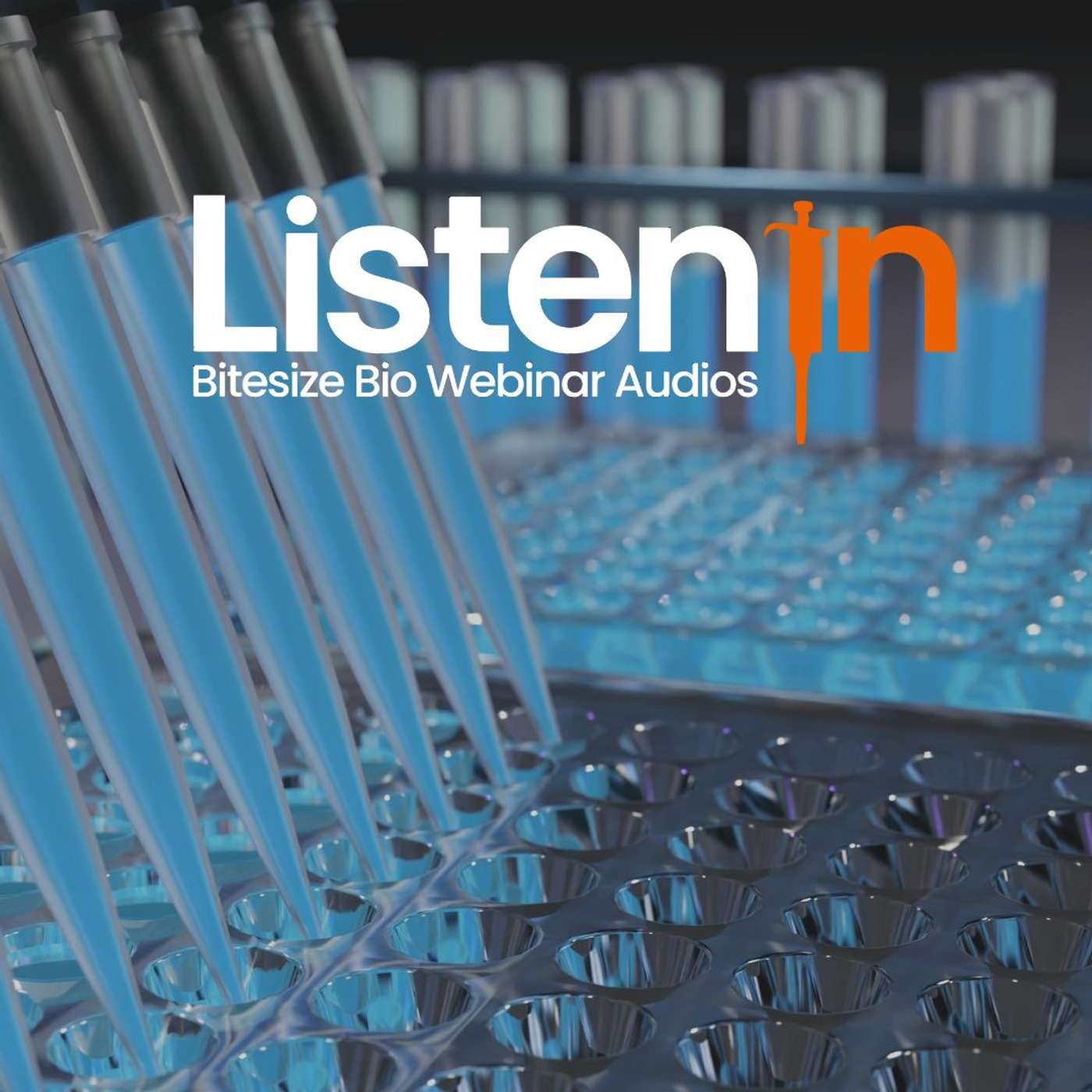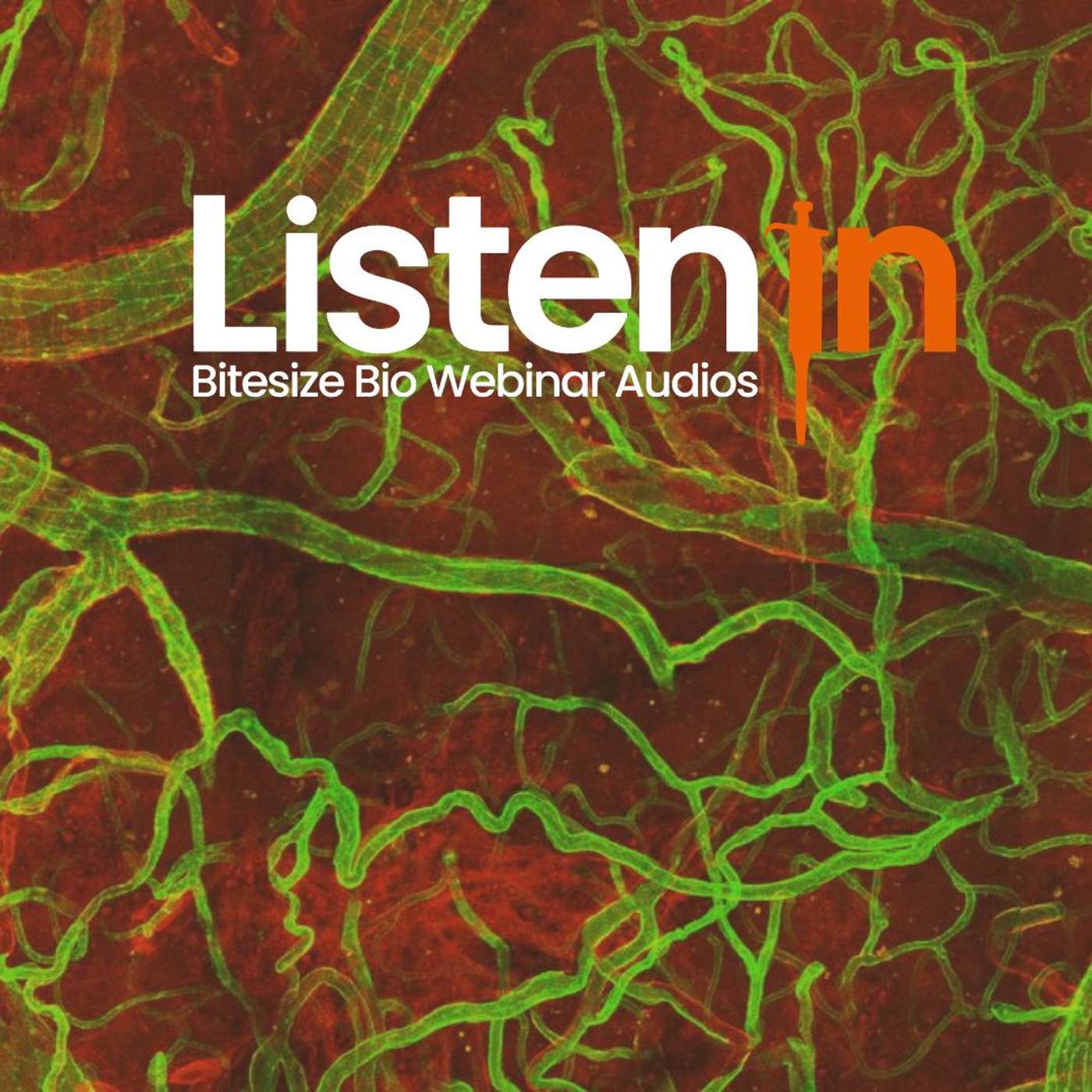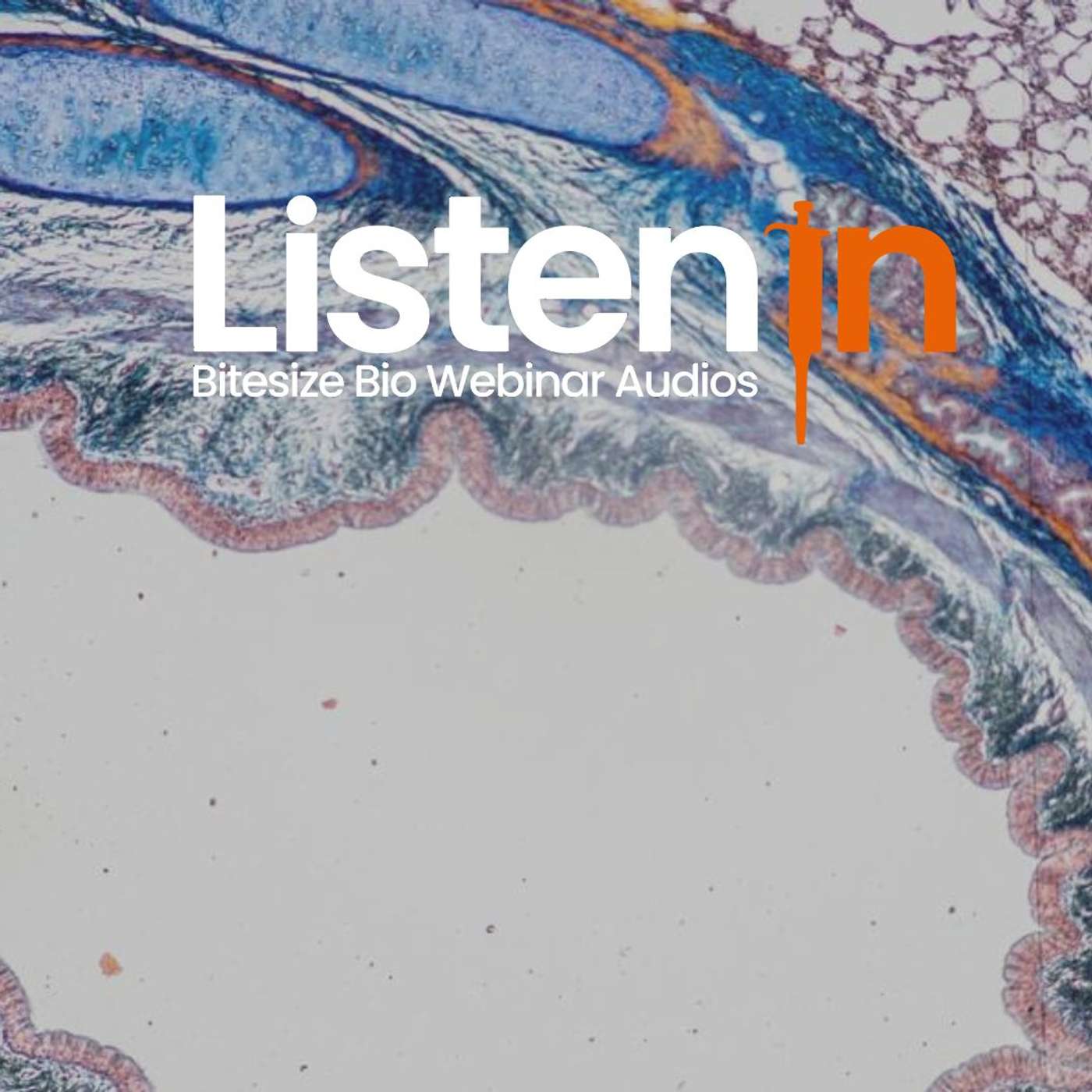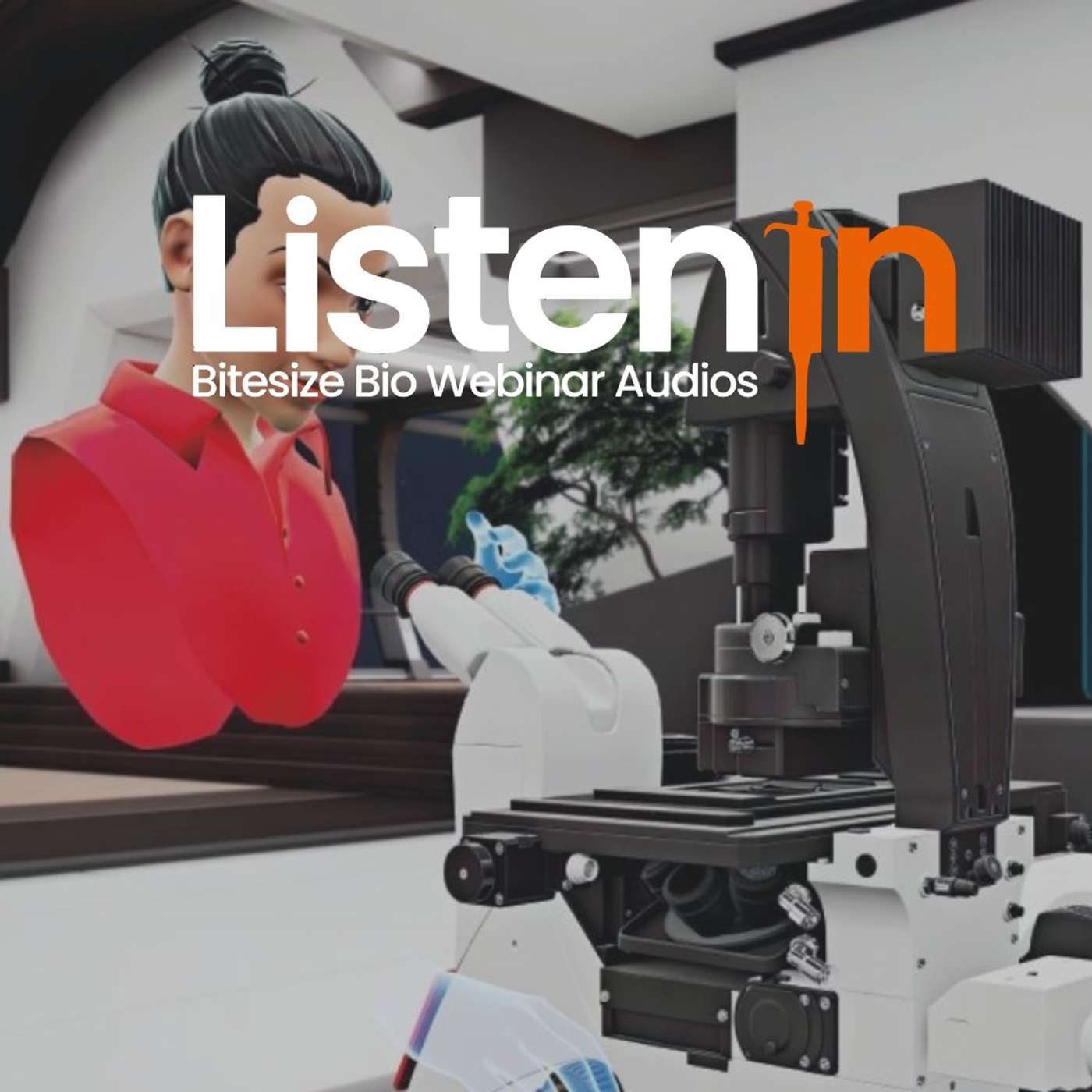Discover Listen In - Bitesize Bio Webinar Audios
Listen In - Bitesize Bio Webinar Audios

Listen In - Bitesize Bio Webinar Audios
Author: Bitesize Bio
Subscribed: 33Played: 1,225Subscribe
Share
© 2022 Bitesize Bio
Description
The Listen In podcast from Bitesize Bio is a compilation of our best webinars to enjoy at your leisure, wherever and whenever.
Each episode is an opportunity to gain the valuable insights you need to advance your research.
From a crash course in developing fool-proof ELISAs to the latest applications and innovations in CRISPR/Cas9 and microscopy techniques, and much more—you'll hear about challenges encountered and discover practical solutions to achieve the best possible results.
Tap into the experience and expertise of leading researchers and commercial specialists to drive your research projects forward efficiently and productively. Listen In now!
https://bitesizebio.com/listen-in/
Each episode is an opportunity to gain the valuable insights you need to advance your research.
From a crash course in developing fool-proof ELISAs to the latest applications and innovations in CRISPR/Cas9 and microscopy techniques, and much more—you'll hear about challenges encountered and discover practical solutions to achieve the best possible results.
Tap into the experience and expertise of leading researchers and commercial specialists to drive your research projects forward efficiently and productively. Listen In now!
https://bitesizebio.com/listen-in/
146 Episodes
Reverse
Discover integrated solutions for precise serial sectioning and cryo-EM sample prep—supporting seamless workflows from ultramicrotomy to 3D electron microscopy.In this podcast, you will learn: • How to streamline serial sectioning for volume EM using the UC Enuity and AT module;• How to achieve in-situ targeting under cryogenic conditions for cryo-EM workflows;• How integrated imaging and AI-powered analysis enhance 3D EM data interpretation.Watch the full presentation here: https://microscopyfocus.com/integrated-solutions-for-serial-sectioning-and-cryo-em-with-uc-enuity/Browse all episodes of the Listen In Series here: https://listen-in.bitesizebio.com/
Learn how to perform a powerful new tissue-clearing method, designed for whole-brain 3D spatial RNA imaging at single cell resolution, and able to provide uniform staining while enhancing tissue transparency in whole organs across multiple species.In this webinar, you will learn:• A groundbreaking tissue-clearing technique for precise whole-brain 3D spatial RNA imaging at single-cell resolution;• How to use it for robust 3D RNA imaging of whole organs of various sizes from different species;• How to uniformly stain whole organs while enhancing tissue transparency and preserving RNA integrity. Watch the full presentation here: https://events.bitesizebio.com/whole-brain-spatial-transcriptomics Browse all episodes of the Listen In Series here: https://listen-in.bitesizebio.com/
Detecting rare antigen-specific T-cell responses requires assays that are both sensitive and scalable. Traditional methods like flow cytometry often struggle with high-throughput needs or with preserving precious sample material.In this episode of Listen In, you’ll discover how ELISpot and FluoroSpot assays overcome these challenges. These cell-based immunoassays measure cytokine and antibody secretion at the single-cell level, offering a sensitive, robust, and accessible way to capture rare immune responses.You’ll learn how ELISpot and FluoroSpot can be applied in vaccine studies, biotherapeutic evaluation, and cell and gene therapy development. The episode also explores practical guidance on assay setup and execution, the advantages of multiplex cytokine detection with FluoroSpot, and how these platforms can be qualified for use in preclinical and clinical trials.With their unique combination of sensitivity and ease of use, ELISpot and FluoroSpot provide a valuable alternative to flow cytometry, especially when high throughput and efficient data collection are priorities.Watch the full presentation here: https://events.bitesizebio.com/detecting-rare-t-cell-responses-atBrowse all episodes of the Listen In Series here: https://listen-in.bitesizebio.com/
In the life sciences, an astounding amount of unused products and materials end up in landfills instead of contributing to research progress. This issue arises across the product lifecycle, from liquidated biotech start-ups that abandon equipment to over-purchasing and pipeline deprioritization at successful firms. Even well-intentioned suppliers encounter forecasting challenges that leave perfectly good items discarded!In this episode of Listen In, explore the root causes of waste in our industry, as we draw on real-world examples of failed companies, discontinued pipelines, and canceled orders. We will examine the ripple effects this has on both operational efficiency and the broader sustainability goals of life science organizations. We will also introduce Wasteless Bio, a dedicated marketplace designed to keep high-quality, unused products in circulation—helping researchers access discounted reagents and instruments while reducing environmental impact. Whether you are a biotech executive, lab manager, or supplier, you will gain a clearer understanding of how to rescue valuable resources from the trash and reinvest them back into scientific innovation.Watch the full presentation here:Browse all episodes of the Listen In Series here: https://listen-in.bitesizebio.com/
Automated counting of certain cell types is notoriously challenging due to their irregular shapes, variable nuclei number, autofluorescence, and often high amounts of debris in samples.However, with the latest developments in cell-counting hardware and app technology, automated counting of even challenging cells is simpler than ever.In this episode, see how you can achieve reliable automated cell counts with the CellDrop Automated Cell Counter. Using hepatocytes as an example, you will learn how the machine learning technology integrated into DeNovix’s Hepatocyte app can save time, reduce human error, and provide consistent results.Watch the full presentation here: https://events.bitesizebio.com/automated-hepatocyte-counting-newBrowse all episodes of the Listen In Series here: https://listen-in.bitesizebio.com/
In this episode of Listen In, we showcase cutting-edge mass spectrometric analysis of mucins, including the characterization of mucinases, enrichment techniques, and complete mucinomic mapping of translationally relevant mucin proteins.Mucins are a diverse family of high molecular weight glycoproteins that play critical roles in protecting and lubricating epithelial surfaces, making them integral to numerous physiological processes and disease states. As a promising class of biomarkers, mucins may offer unique insights into various pathologies, such as cancer and chronic inflammatory diseases. However, their complex structures and extensive glycosylation present significant challenges in their study and application.Mucin-domain glycoproteins are densely O-glycosylated and play key roles in many biological functions. However, their dense O-glycosylation remains enigmatic both in the glycoproteomic landscape and structural dynamics, primarily due to the challenges associated with studying mucin domains. In this episode, you will get an introduction to the (glyco)proteomic techniques used in Mucinomics and learn how proper sample preparation of mucin-containing tissues for mass spectrometry is key to discovery.MilliporeSigma is the U.S. and Canada Life Science business of Merck KGaA, Darmstadt, Germany.Watch the full presentation here: Browse all episodes of the Listen In Series here: https://listen-in.bitesizebio.com/
In this episode, learn about latest advancements in multiplex assay technology.Hear from real user experience how the advanced xMAP INTELLIFLEX® DR-SE Instrument revolutionizes assay multiplexing, enabling simultaneous rapid data acquisition for multiple sample parameters to expand the depth and breadth of your research.Watch the full presentation here: https://events.bitesizebio.com/user-experience-of-the-xmapThis compact, flow-based multiplex platform integrates xMAP® Technology with modern enhancements to streamline assay development, enhance user experience, and deliver fast, reliable results by acquiring data for two parameters per analyte simultaneously.Browse all episodes of the Listen In Series here: https://listen-in.bitesizebio.com/
Immunoassays are pivotal in scientific research, enabling the precise identification and measurement of specific analytes. They pave the way for investigations into disease mechanisms, discovering biomarkers, and evaluating the efficacy of potential therapeutic interventions.The key reagents included in an immunoassay can significantly impact reliability and reproducibility, underscoring the importance of understanding critical components within immunoassay kits.When selecting an immunoassay platform, it's essential to consider critical elements such as multiplexing capabilities and sensitivity needs as part of the experimental design.Additionally, understanding the various assay formats and their data outputs can aid in the immunoassay selection process.In this episode, immunoassay experts give practical guidance in these areas, empowering researchers to achieve more precise and meaningful results, thereby advancing knowledge and understanding in various scientific fields.MilliporeSigma is the U.S. and Canada Life Science business of Merck KGaA, Darmstadt, Germany.For Research Use Only. Not For Use In Diagnostic Procedures.Watch the full presentation here: https://events.bitesizebio.com/inside-immunoassays-strategies-to Browse all episodes of the Listen In Series here: https://listen-in.bitesizebio.com/
Multicolor 3D fluorescent confocal microscopy presents significant challenges in image acquisition and data analysis. However, AI is making a massive impact on 3D spatial biology. This episode of Listen In explores the incorporation of AIVIA, an AI-powered image analysis software, into workflows to address these challenges in analyzing multicolor fluorescent microscopy data of 3D organoids. See how AIVIA’s tools enhance the visualization and quantification of cellular structures and organoids, enabling precise segmentation and analysis of fluorescent signals. And get a showcase of how AIVIA supports Python-based image analysis for microscopists. Watch the full presentation here: https://events.bitesizebio.com/ai-powered-3d-organoid-analysisBrowse all episodes of the Listen In Series here: https://listen-in.bitesizebio.com/
In this episode of Listen In, explore high-throughput and wide-range protein concentration analysis that can deliver a 20-fold improvement in time and budget savings.Protein concentration is an obligatory critical quality attribute necessary to determine total protein content in biopharmaceutical formulations. Concentration determination is necessary before many downstream assays. A UV-based spectrophotometric assay using the protein’s extinction coefficient is the most typical method. Conventional UV methods or a specialized approach using variable pathlength slope spectroscopy could take one day to measure 15 samples in triplicate. Larger batches would require multiple analysts for a single-day turnaround time. With vast studies spanning multiple projects, protein concentration analysis becomes a key deliverable before all other methods can be performed. Thus, efficient rapid concentration analysis with a minimal volume requirement is essential. Hit play to learn how the Lunatic (Unchained Labs, Pleasanton, CA) offers rapid, plate-based concentration measurement with minimal prep and sample volume requirements. It utilizes only two microliters per sample, can analyze 96 wells in less than 12 minutes, and provides accurate measurements over a broad concentration range, from 0.03 mg/mL to 176 mg/mL.Watch the full presentation here: https://events.bitesizebio.com/high-throughput-and-wide-range/joinBrowse all episodes of the Listen In Series here: https://listen-in.bitesizebio.com/
Learn more about the capabilities of MULTI-seq in single-cell sequencing in this episode of Listen In. Developed by the Gartner Lab at UCSF, this innovative multiplexing method increases sample and cell throughput while minimizing cost and improving your data quality. From modest experiments to expansive 96-plex studies and beyond, MULTI-seq enables truly mechanistic studies. Hit play to explore the potential of this tool and how it could benefit your research.Watch the full presentation here: https://events.bitesizebio.com/multiplexing-magic-how-multi-seq/joinBrowse all episodes of the Listen In Series here: https://listen-in.bitesizebio.com/
A major question in developmental biology is understanding how cellular fate decisions are regulated precisely in space and time. Fortunately, we can now begin to observe these processes with modern imaging approaches, which allow the tracking of cell fate decision events and cellular rearrangements by live 3D time-lapse microscopy. This development is shifting our understanding of pattern formation in development away from static models towards models based on the principles of dynamical systems and statistical mechanics. In this episode of Listen In, hear how light-sheet microscopy is the technique of choice for volumetric live imaging of 3D samples at high speed with minimal phototoxicity. See two user examples of how light-sheet microscopy is helping scientists understand the biological process of intestinal and brain organoid development.We also explore the technology behind the Leica Viventis LS2 Live, which combines dual-view illumination and detection in an open-top configuration. You will also learn how this unique configuration allows easy sample mounting and long-term imaging from small embryos and organoids to large multicellular systems. Watch the full presentation here: https://microscopyfocus.com/multi-view-light-sheet-microscopy-to-track-cell-lineages-in-tissue-morphogenesis/"Browse all episodes of the Listen In Series here: https://listen-in.bitesizebio.com/
In this episode, learn how AI-powered segmentation, spatial analysis, and phenotyping can help you gain new insights for 3D images with complex morphological measurements featuring up to 15 biomarkers. See how to characterize tissue microenvironments and examine the differences between normal and disease tissues without the need to code or train Deep Learning models—all with Aivia. Plus, get your 3D spatial biology results faster with an inbuilt, enhanced Deep Learning model that can accurately detect and partition cells with morphological variations. You will discover how to leverage your expertise or simple automation to classify cells into different phenotypes and interactively explore them in their spatial context. We also demonstrate how, with a few clicks, you can produce key measurements such as percentage distribution, Pearson correlation coefficient, and dimensionality reduction. You will also learn how to visualize the relationship between biomarkers and clusters using dendrograms.Watch the full presentation here: https://microscopyfocus.com/enhancing-3d-spatial-biology-with-ai-simplified-insights-for-all/Browse all episodes of the Listen In Series here: https://listen-in.bitesizebio.com/
Imaging scientists have a critical educational role in improving rigor and reproducibility by sharing their technical expertise and providing intellectual contributions in all aspects of image-based science. They participate in creating, developing, and disseminating guidelines, resources, and tools to improve image-based research.In this episode, learn what impacts reproducibility in microscopy, discover resources and initiatives for improving education, rigor, and reproducibility, and see how collaboration drives innovation.Watch the full presentation here: https://microscopyfocus.com/accelerate-scientific-progress-the-power-of-reproducibility-collaboration-and-new-imaging-technologies/Browse all episodes of the Listen In Series here: https://listen-in.bitesizebio.com/
Immunoassays play an indispensable role in scientific research. They facilitate the detection and quantification of specific analytes, enabling in-depth investigations into disease mechanisms, biomarker discovery, and evaluation of the potential of therapeutic interventions.Sample selection and preparation are of utmost importance, as they have a direct impact on the accuracy, reliability, and integrity of the obtained results.Properly selecting and preparing samples ensures that they are representative of the population under study and that the analytes of interest are preserved in their native state.In addition, controlling and mitigating matrix interference is crucial in immunoassays to minimize the influence of sample components that may hinder the accuracy of measurements.In this episode, hear from immunoassay experts as they guide you through all these areas. Watch the full presentation here: https://events.bitesizebio.com/inside-immunoassays-best-practices/joinBrowse all episodes of the Listen In Series here: https://listen-in.bitesizebio.com/
The brain is an immune-privileged organ, meaning it is protected from the entry of pathogens, blood circulating factors, and immune cells by a physical barrier called the blood-brain barrier (BBB). But pathological events such as ischemia (stroke), trauma (traumatic brain injury), or tumor growth (gliomas and brain metastasis), activate the vascular endothelium, disturb or disrupt the BBB and allow immune cell homing.In this episode, discover how innate immunity can sustain deleterious effects following brain trauma, and the technological developments enabling longitudinal studies into post-trauma lesion remodeling.Watch the full presentation here: https://microscopyfocus.com/windows-on-neurovascular-pathologies/Browse all episodes of the Listen In Series here: https://listen-in.bitesizebio.com/
Tissue heterogeneity is a significant challenge when analyzing proteins in tissue samples to identify disease states. In this episode, explore how combining laser microdissection with mass spectrometry (LCM-MS) on fixed and stained tissues lets you explore the protein networks within pathological features to shed light on their molecular functions.Using hallmark lesions of lung fibrosis in the honeycomb airways and fibroblastic foci as an example, you'll hear how this technology can detect over 4,900 proteins from tissue volumes as low as 0.005 mm3.Watch the full presentation here: https://events.bitesizebio.com/unleashing-fibrotic-secrets/joinBrowse all episodes of the Listen In Series here: https://listen-in.bitesizebio.com/
Join Advanced Workflow Specialists for a virtual reality showcase of Leica's confocal microscopy platform, STELLARIS. In this episode of Listen In, discover how to enhance your confocal imaging from performing multicolor experiments with clear, sharp images to capturing fluorescence intensity and lifetime-based information simultaneously.Watch the full presentation here: https://microscopyfocus.com/confocal-microscopy-stellaris-showcase/Browse all episodes of the Listen In Series here: https://listen-in.bitesizebio.com/
The fundamental cellular mechanisms of internalization and trafficking are crucial to many areas of cell biology, especially the proper function of therapeutic antibodies. Antibodies intended for use as antibody-drug conjugates (ADCs) should specifically bind to target cells and rapidly internalize via endocytosis. However, the ability to study these processes has historically been limited by the lack of tools that directly monitor the internalization and subsequent catabolism of extracellular material. In this episode, get a demo of rapid, high-throughput methods to screen for antibody internalization. You will also hear about techniques to directly visualize the internalization of therapeutic antibodies and ADCs in live cells for structure-activity relationship studies. You will also learn how the insights provided by these approaches have the potential to accelerate biotherapeutic lead generation and development.Watch the full presentation here: https://events.bitesizebio.com/tools-techniques-for-the-study-of/joinBrowse all episodes of the Listen In Series here: https://listen-in.bitesizebio.com/
Join us on Listen In as we unveil a breakthrough method for imaging skin immune cells, crucial for accurate diagnoses and personalized treatments. Traditional imaging faces challenges like high tissue autofluorescence and spectral spillover. However, our latest episode introduces a game-changing solution using the Leica SP8 microscope coupled with the MANTIS system.Learn how this innovative approach allows for the acquisition of up to 10 colors, providing detailed immune phenotyping of skin samples. Plus, discover how MANTIS simplifies complex imaging, making advanced analysis accessible and practical for routine clinical practice.Tune in to explore how this new technology can revolutionize the identification of skin immune cells and enhance diagnostic accuracy.Watch the full presentation here: https://microscopyfocus.com/multiplex-annotated-tissue-imaging/Browse all episodes of the Listen In Series here: https://listen-in.bitesizebio.com/


